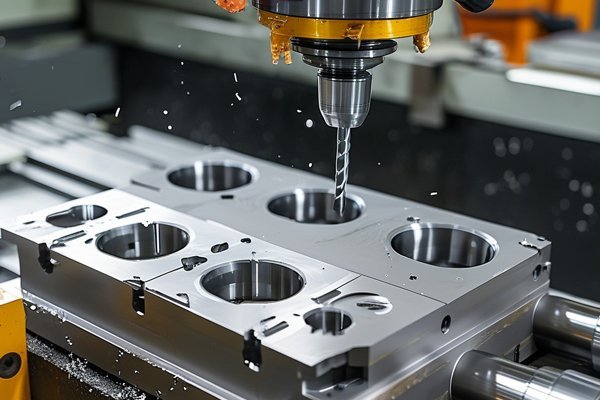Did you know that the global CNC machining market is expected to reach over $100 billion by 2025? This explosive growth can be largely attributed to technological advances in the manufacturing sector, including the use of innovative materials such as low-melting-point steel. In the ever-evolving landscape of CNC machining, understanding the applications and advantages of different materials is crucial for manufacturers looking to enhance their production capabilities and improve product quality.
Low-melting-point steel brings a unique set of properties that can significantly influence both the efficiency of CNC machining processes and the quality of finished products. But just how do these materials work, and what benefits do they offer? In this comprehensive guide, we will explore the intricate relationship between low-melting-point steel and CNC machining, providing a detailed analysis of its applications, advantages, challenges, and best practices.
Chapter 1: Understanding Low-Melting-Point Steel
1.1 What are Low-Melting-Point Steels?
Low-melting-point steels are defined as ferrous alloys with melting points significantly lower than that of standard carbon steel. Typically, these alloys contain various elements such as nickel, cobalt, and molybdenum, which contribute to their unique properties. The melting point of these materials ranges between 900°C to 1,300°C, making them suitable for various machining processes.
1.2 Composition and Properties
The composition of low-melting-point steels can vary, but their essential characteristics generally include:
Chapter 2: Advantages of Low-Melting-Point Steel in CNC Machining
2.1 Enhanced Machining Speed and Efficiency
One of the most significant advantages of using low-melting-point steel in CNC machining is the increased speed and efficiency of the machining process. Due to their lower melting points, these materials require less energy to reach the necessary temperatures for cutting. This means that CNC machines can achieve greater feed rates and spindle speeds.
2.2 Superior Surface Finish Quality
The ability to achieve a fine surface finish is crucial in many machining applications, particularly in industries such as aerospace and automotive, where strict tolerances and aesthetics are vital. Low-melting-point steels often yield superior surface finishes, reducing the need for subsequent polishing or grinding operations.
2.3 Reduced Tool Wear
In machining, tool wear can be a significant factor affecting production efficiency and costs. Low-melting-point steels tend to generate less friction and heat during cutting processes, which can lead to reduced wear on cutting tools. This translates to longer tool life, decreased replacement costs, and less downtime in production schedules.
2.4 Flexibility in Design and Fabrication
These materials are highly versatile and can be used in a wide range of applications. Low-melting-point steels can be easily fabricated into complex geometries, making them ideal for intricate components. Their excellent weldability and machinability mean they can be employed in various industries, from medical devices to automotive parts.
Chapter 3: Applications of Low-Melting-Point Steel in CNC Machining
3.1 Aerospace Industry
In the aerospace sector, where weight and strength are paramount, low-melting-point steels are often utilized for crafting components such as brackets, fittings, and casings. Their reduced weight without compromising strength makes them ideal for these applications, enhancing fuel efficiency.
3.2 Automotive Manufacturing

The automotive industry is increasingly leveraging low-melting-point steel for producing various components, including engine parts and body frames. Their ability to withstand high temperatures and promote efficient manufacturing processes has made them a staple material among automotive manufacturers.
3.3 Medical Equipment
In medical device manufacturing, hygiene and precision are crucial. Low-melting-point steels can be easily machined into highly precise and complex shapes, making them perfect for medical instruments (scalpels, surgical tools, etc.) where accuracy is essential.
Chapter 4: Challenges in Using Low-Melting-Point Steel
4.1 Cost Considerations
Although low-melting-point steels offer numerous advantages, they can also come with higher costs compared to traditional steels. The price of raw materials and the additional processing steps required can impact overall production budgets.
4.2 Thermal Management During Machining
While low-melting-point steels generate less heat during machining, managing thermal expansion remains crucial. CNC machinists must adjust their processes to account for differences in thermal expansion between the workpiece and the tooling.
4.3 Material Limitations
Despite their many benefits, low-melting-point steels may not always be ideal for all applications. In some situations, high-stress environments may require materials that have a higher melting point and enhanced mechanical properties. Hence, careful consideration of the application and environment is essential.
Chapter 5: Best Practices for Machining Low-Melting-Point Steels
5.1 Optimize Cutting Parameters
To maximize the benefits of low-melting-point steels, CNC operators should optimize cutting speed, feed rate, and depth of cut. Implementing testing procedures can help determine the best parameters for different components.
5.2 Utilize Advanced Tooling
The selection of appropriate tooling is critical. Using high-quality cutting tools designed for lower-friction and heat-resistant properties will minimize tool wear and improve the surface finish.
5.3 Implement Effective Cooling Strategies
Despite reduced heat generation, it remains important to incorporate effective cooling strategies during machining. Implementing coolant or lubrication systems can further extend tool life and enhance machining efficiency.
5.4 Regular Maintenance of CNC Machines
Maintaining CNC machinery is vital for effective operations. Regular inspections, calibrations, and adjustments ensure that machinery remains in optimal working condition, capable of delivering the precision required for low-melting-point steel applications.
As we have explored in this comprehensive guide, low-melting-point steels present numerous advantages and applications in CNC machining. Their unique properties enhance machining efficiency, improve surface finishes, and reduce tool wear, making them an attractive option for manufacturers across various industries. However, like any material, they come with challenges, including cost considerations and thermal management during machining.
By implementing best practices and optimizing processes, CNC manufacturers can leverage low-melting-point steels to create high-quality products that meet the demands of modern consumers. Embracing this innovative material could well be the key to achieving greater competitiveness in the market.
In summary, understanding the intricate relationship between low-melting-point steel and CNC machining is crucial for manufacturers looking to innovate and excel. As the machining industry continues to evolve, keeping abreast of these technological advancements is paramount. By doing so, you can ensure your business remains at the forefront of production efficiency and product quality.
So, as you think about your next manufacturing project, consider the role of low-melting-point steels and how they could transform your production capabilities. It’s a conversation worth having—and one that could lead to inventive solutions in your machining operations.






